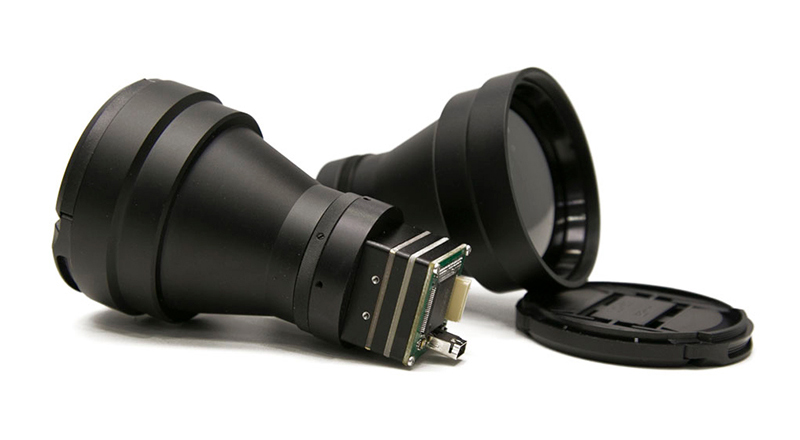December 16, 2024By: MH TECHView: 87

1. Field of view
Small lens: usually leads to a smaller field of view. For example, when the focal length of the lens is long, it is like looking through the long tube part of a telescope, and the range that can be observed is relatively narrow. In military applications, such as thermal imaging night vision devices used by snipers, if the lens is small, its field of view may be only a few degrees to more than ten degrees, which is conducive to accurately aiming at a single target at a long distance, and the user can focus more on the target details and eliminate surrounding interference factors. However, when it is necessary to observe a large area of scenes, such as military scouts conducting regional searches or monitoring the surrounding conditions of large-scale military facilities, small lenses may miss targets in some areas.
Large lens: Generally, it can provide a wider field of view. In order to meet the needs of wide-area monitoring, some thermal imaging night vision devices are equipped with larger lenses, and their field of view can reach dozens of degrees or even close to 180 degrees. This is like taking a photo with a wide-angle camera, which can cover more scene content in one picture. In military operations, such as border patrols or guarding the perimeter of a camp, a large lens allows soldiers to observe a wider area at one time, detect potential threats from different directions in time, and improve security prevention efficiency.
2. Imaging resolution
Small lens: Under the same conditions, a small lens may limit the imaging resolution. Because the lens is small in size, it can receive relatively less infrared radiation energy, just like a small-caliber pipe receiving matter, which will result in insufficient imaging details. For example, when observing the details of distant targets, such as distinguishing the details of equipment on a vehicle or the type of weapon carried by a person, a small lens may blur the image due to insufficient resolution, affecting the accuracy of target recognition.
Large lens: A large lens can collect more infrared radiation, which helps to improve imaging resolution. It is like a large "funnel" that can receive infrared signals from a wider area, and after processing, it can present a clearer and more detailed image. In military reconnaissance, for identifying subtle features of distant targets, such as identifying the architectural structure details of military facilities and judging whether distant equipment is damaged, a large-lens high-resolution thermal imaging night vision device can provide more valuable image information.
3. Detection distance
Small lens: Due to the limited infrared energy received by the small lens, its detection distance is relatively short. When the target is far away, the small lens may not be able to collect enough infrared radiation to form a clear and recognizable image. For example, under the same target infrared radiation intensity and environmental conditions, a small-lens thermal imaging night vision device may only detect targets within a few hundred meters. For some military tasks that require long-distance detection, such as long-range early warning or preliminary reconnaissance of long-distance targets, the small lens may not meet the requirements.
Large lens: The large lens can collect more infrared energy, which gives it an advantage in detection distance. It can detect targets at a longer distance. Under ideal conditions, some high-performance large-lens thermal imaging night vision devices can detect targets at a distance of several kilometers or even farther. This is very important for tasks such as military strategic reconnaissance and long-distance target early warning, such as using large-lens thermal imaging night vision devices to monitor enemy military deployments at long distances in border areas.
4. Image brightness and contrast
Small lens: Small lenses receive less infrared radiation, which may result in lower image brightness and may also affect contrast. Because brightness and contrast are related to the strength of the received signal, fewer infrared radiation signals may make the image look dim and the difference between the target and the background is not obvious enough. In complex environments, such as in urban environments at night, images with low brightness and contrast may make target identification difficult.
Large lens: Large lenses collect more infrared radiation, which helps to improve the brightness and contrast of the image. Brighter images allow users to see the target more clearly, while good contrast can make the target's thermal outline more prominent and easier to distinguish from the background. For example, when observing targets at sea, large-lens thermal imaging night vision devices can make targets such as ships appear more clearly against the background of the sea surface by increasing the brightness and contrast of the image.